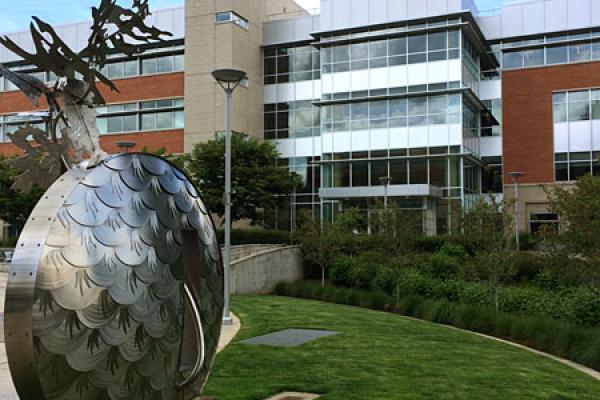Twenty percent of waste sent to landfills in our region is food — about 170,000 tons per year. This food loss would fill 5,000 semi-trucks each year.
Measuring and analyzing food waste can help lower food purchasing costs, eliminate unwanted waste, and conserve the soil, water and energy resources that are used to grow, pack and ship food. We can provide personalized assistance, best practices, tools and resources to support your waste prevention efforts.
Assessment Opportunities
- waste audit
- purchasing practices
- inventory and food storage
- processing and handling of food
- food preparation practices and uses for excess prepped food
- food donation and composting
Why Implement Food Waste Prevention Strategies?
- food cost savings
- lower garbage fees
- reduce waste
- less greenhouse gas impact and preserve natural resources
- stronger relationships with customers and employees
Tips From Your Peers
- Food waste reduction champions from Washington County
- How 8 Portland restaurants minimize food waste
- Hotel|Kitchen Case Study from the Kimpton Hotel Monaco Portland
Food Waste Tools and Guides
For an in-depth look at food waste at a national level, below you will find the latest reports, efforts and strategies.
- Sustainable Management of Food: Tools to help measure and track the amount, type and the source of food and packaging waste.
- Food Recovery Challenge: Organizations pledge to improve their sustainable food management practices and report results.
- U.S. 2030 Food Loss and Waste Reduction Goal: The federal government is seeking to work with communities, organizations and businesses along with partners in state, tribal and local government to reduce food loss and waste by 50 percent over the next 15 years.
- Further with Food: An online hub developed by the EPA, USDA and 10 other prominent organizations providing key information and solutions to reduce food loss and waste.
- ReFED: A data-driven guide for businesses, government, funders and nonprofits to collectively reduce food waste at scale.
Prevention Strategies for Restaurants
By tracking food waste and understanding how food is purchased, stored and utilized in your establishment, you can prevent food waste from going to landfills, and reduce food and garbage costs.
- Tracking (We have tools to help you)
- Create baseline data through an audit or self-assessment
- Track wasted food daily or weekly
- Assess data
- Implement changes from food loss findings
- Purchasing
- Check your inventory before placing orders
- Use information from tracking waste to modify future orders
- Adjust purchasing policies to reduce excess food purchases
- Food storage
- Adopt an internal food dating system - first in, first out
- Always use proper food storage and handling practices
- Food preparation
- Use information from tracking waste to modify daily prep practices
- Modify food preparation and par levels to minimize waste
- Menu
- Implement more cook-to-order items
- Monitor and adjust selections to reduce frequently uneaten or wasted items
- Heat smaller portions
- Set out smaller portions on buffets and salad bars
- Repurpose leftovers and excess to create soups or specials
- Employee training/awareness
- Reduce prep waste
- Increase proper food handling
- Decrease improper cooking
- Divert your waste
- Donate surplus food that will not be used
- Separate food scraps to collect for compost
Prevention Strategies for Grocers
Understanding what you are wasting is the first step in evaluating and implementing actions that can reduce food waste, raise awareness around waste prevention and reduce costs.
- Tracking (We have tools to help you)
- Create baseline data through an audit or self-assessment
- Track food waste/food used by department
- Assess data
- Implement changes from food loss findings
- Track results of any changes that could impact food waste
- Purchasing
- Check your inventory before placing orders
- Use what you learn from tracking waste to modify orders
- Adjust purchasing policies to reduce excess food purchases
- Food storage
- Adopt an internal food dating system - first in, first out
- Always use proper food storage and handling practices
- Food preparation
- Track leftovers/wasted food to modify daily prep practices
- Modify food preparation and par levels to minimize waste
- Menu
- Implement more cook-to-order items
- Monitor and adjust ready-to-eat food selections to reduce frequently uneaten or wasted items
- Set out smaller portions in cases and on buffets or salad bars
- Use culls and soon to be outdated foods in prepared foods, bakery and other departments
- Employee training/awareness
- Reduce prep waste
- Increase proper food handling
- Decrease improper cooking
- Identify and divert foods properly
- culls and soon to be out of date items repurposed within the store
- donation
- compost
- Divert your waste
- Donate surplus food that will not be used
- Separate food scraps to collect for compost
Contact Us
We can offer personalized assistance to help identify waste and relevant solutions to integrate into your business’s daily operation. Set up a program and train staff. Email us at lis@clackamas.us or call 503-742-4458.
 Translate
Translate






